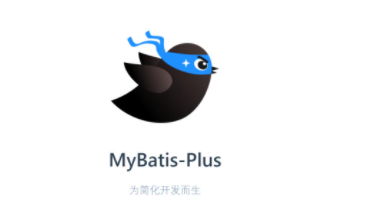一、AOP(概念)
(1)面向切面编程(方面),利用 AOP 可以对业务逻辑的各个部分进行隔离,从而使得业务逻辑各部分的耦合度降低,提高程序的可重用性,同时提高了开发的效率。
(2)通俗的描述:不通修改源代码方式,在主功能里面添加新功能
(3)使用登录例子说明 AOP
图示:

二、AOP (底层原理)
1、AOP 底层使用动态代理
(1)有两种情况动态代理
第一种 有接口情况,使用 JDK 动态代理

第二种没有接口情况,使用 CGLIB 动态代理

三、AOP(JDK 动态代理)
1、使用 JDK 动态代理,使用 Proxy 类里面的方法创建代理对象

(1)调用 newProxyInstance 方法

方法有三个参数:
第一参数:类加载器
第二参数:增强方法所在的类,这个类实现的接口,支持多个接口
第三参数,实现这个接口 InvocationHandler, 创建代理对象,写增强的部分
2、编写 JDK 动态代理代码
(1)创建接口,定义方法
1
2
3
4
| public interface UserDao {
public int add(int a,int b);
public String update(String id);
}
|
(2)创建接口实现类,实现方法
1
2
3
4
5
6
7
8
9
10
| public class UserDaoImpl implements UserDao {
@Override
public int add(int a, int b) {
return a+b;
}
@Override
public String update(String id) {
return id;
}
}
|
(3)使用 Proxy 类创建接口代理对象
1
2
3
4
5
6
7
8
9
10
11
12
13
14
15
16
17
18
19
20
21
22
23
24
25
26
27
28
29
30
31
32
33
34
35
36
| public class JDKProxy {
public static void main(String[] args){
Class[] interfaces = {UserDao.class};
UserDaoImpl userDao = new UserDaoImpl();
UserDao dao = (UserDao) Proxy.newProxyInstance(JDKProxy.class.getClassLoader(), interfaces, new UserDaoProxy(userDao));
int result = dao.add(1,2);
System.out.println("result="+result);
}
}
class UserDaoProxy implements InvocationHandler{
private Object obj;
public UserDaoProxy(Object obj){
this.obj = obj;
}
@Override
public Object invoke(Object proxy, Method method, Object[] args) throws Throwable {
System.out.println("方法执行...."+method.getName()+":传递的参数..."+ Arrays.toString(args));
Object res = method.invoke(obj, args);
System.out.println("方法之后执行..."+obj);
return res;
}
}
|
三、AOP 术语
1、连接点
类里面哪些方法可以被增强,这些方法称为连接点
2、切入点
实际被真正增强的方法,称之切入点
3、通知(增强)
(1) 实际增强的逻辑部分称为通知
(2)通知的多种类型
① 前置通知 ② 后置通知 ③ 环绕通知 ④ 异常通知 ⑤ 最终通知
4、切面
把通知应用到切入点的过程
四、AOP 操作
1、Spring 框架一般都是基于 AspectJ 实现 AOP 操作
AspectJ 不是 Spring 组成部分,独立 AOP 框架, 一般把 AspectJ 和 Spring 框架一起使用,进行 AOP 操作
2、基于 AspectJ 实现 AOP 操作
(1)基于 xml 配置文件实现
(2)基于注解方式实现(使用)
3、在项目工程里面引入 AOP 相关依赖

4、切入点表达式
(1)切入点表达式作用:知道对哪个类里面的哪个方法进行增强
(2)语法结构:execution([权限修饰符][返回值类型][类全路径][方法名称][参数列表])
举例 1: 对 com.oy.dao.BookDao 类里面的 add 进行增强
1
| execution(* com.oy.dao.BookDao.add(..))
|
举例 2:对 com.oy.dao.BookDao 类里面的所有的方法进行增强
1
| execution(*.com.oy.dao.BookDao.*(..))
|
举例 3:对 com.atguigu.dao 包里面所有类,类里面所有方法进行增强
1
| execution(* com.atguigu.dao.*.* (..))
|
五、AOP 操作(AspectJ 注解)
1、创建类,再类里面定义方法
1
2
3
4
5
| public class User {
public void add(){
System.out.println("add....");
}
}
|
2、创建增强类(编写增强逻辑)
(1)在增强类里面,创建方法,让不同的代表不同的通知类型
1
2
3
4
5
6
|
public class UserProxy {
public void before() {
System.out.println("before......");
}
}
|
3、进行配置的通知
(1)在 Spring 配置文件中,开始注解扫描
1
2
3
4
5
6
7
8
9
10
| <?xml version="1.0" encoding="UTF-8"?>
<beans xmlns="http://www.springframework.org/schema/beans"
xmlns:xsi="http://www.w3.org/2001/XMLSchema-instance"
xmlns:context="http://www.springframework.org/schema/context"
xmlns:aop="http://www.springframework.org/schema/aop"
xsi:schemaLocation="http://www.springframework.org/schema/beans http://www.springframework.org/schema/beans/spring-beans.xsd
http://www.springframework.org/schema/context http://www.springframework.org/schema/context/spring-context.xsd
http://www.springframework.org/schema/aop http://www.springframework.org/schema/aop/spring-aop.xsd">
<context:component-scan base-package="com.oy.online.Spring.aopanno"></context:component-scan>
|
(2) 使用注解创建类 User 和 UserProxy 对象

(3)在增强类上面添加注解 @Aspect
1
2
3
4
|
@Component
@Aspect
public class UserProxy {
|
(4)在 spring 配置文件中华开启生成代理对象
1
2
| <!-- 开启 Aspect 生成代理对象-->
<aop:aspectj-autoproxy></aop:aspectj-autoproxy>
|
4、配置不同类型的通知
(1)在增强类里面,在作为通知方法上面添加通知类型的注解,使用切入点表达式配置
1
2
3
4
5
6
7
8
9
10
11
12
13
14
15
16
17
18
19
20
21
22
23
24
25
26
27
28
29
30
31
32
33
34
35
36
37
| @Component
@Aspect
public class UserProxy {
@Before(value = "execution(* com.oy.online.Spring.aopanno.User.add(..))")
public void before(){
System.out.println("before....");
}
@AfterReturning(value = "execution(* com.oy.online.Spring.aopanno.User.add(..))")
public void afterReturning(){
System.out.println("afterReturning....");
}
@After(value = "execution(* com.oy.online.Spring.aopanno.User.add(..))")
public void after(){
System.out.println("after....");
}
@AfterThrowing(value = "execution(* com.oy.online.Spring.aopanno.User.add(..))")
public void afterThrowing(){
System.out.println("afterThrowing.........");
}
@Around(value = "execution(* com.oy.online.Spring.aopanno.User.add(..))")
public void around(ProceedingJoinPoint proceedingJoinPoint)throws Throwable{
System.out.println("环绕之前.........");
proceedingJoinPoint.proceed();
System.out.println("环绕之后.........");
}
}
|
5、相同的切入点抽取
1
2
3
4
5
6
7
8
9
10
|
@Pointcut(value = "execution(* com.oy.online.Spring.aopanno.User.add(..))")
public void pointdemo(){
}
@Before(value = "pointdemo()")
public void before(){
System.out.println("before....");
}
|
6、有多个增强类同一个方法进行增强,设置增强类优先级
(1)在增强类上面添加注释 @Order(数字类型值),数字类型值越小优先级越高
1
2
3
4
5
6
7
8
9
| @Component
@Aspect
@Order(1)
public class PersonProxy {
@Before(value = "execution(* com.oy.online.Spring.aopanno.User.add(..))")
public void before(){
System.out.println("PersonProxy before....");
}
}
|
7、完全使用注解开发
(1)创建配置类,不需要创建 xml 配置文件
1
2
3
4
5
| @Configuration
@ComponentScan(basePackages = {"com.oy.online.Spring.aopanno"})
@EnableAspectJAutoProxy(proxyTargetClass = true)
public class ConfigAOP {
}
|
测试:
1
2
3
4
5
6
7
| @Test
public void test2(){
ApplicationContext context = new AnnotationConfigApplicationContext(ConfigAOP.class);
User user = context.getBean("user", User.class);
user.add();
}
|
六、AOP 操作(AspectJ 配置文件)
1、创建两个类,增强类和被增强类,创建方法
1
2
3
4
5
6
|
public class Book {
public void buy(){
System.out.println("add.....");
}
}
|
1
2
3
4
5
6
|
public class BookProxy {
public void before(){
System.out.println("before.....");
}
}
|
2、在 Spring 配置文件中创建两个类的对象
1
2
3
|
<bean id="book" class="com.oy.online.Spring.aopxml.Book"></bean>
<bean id="bookProxy" class="com.oy.online.Spring.aopxml.BookProxy"></bean>
|
3、在 Spring 配置文件中配置切入点
1
2
3
4
5
6
7
8
9
|
<aop:config>
<aop:pointcut id="p" expression="execution(* com.oy.online.Spring.aopxml.Book.buy(..))"/>
<aop:aspect ref="bookProxy">
<aop:before method="before" pointcut-ref="p"></aop:before>
</aop:aspect>
</aop:config>
|
4、测试类
1
2
3
4
5
6
7
| @Test
public void test3(){
ApplicationContext context = new ClassPathXmlApplicationContext("bean2.xml");
Book book = context.getBean("book", Book.class);
book.buy();
}
|


















